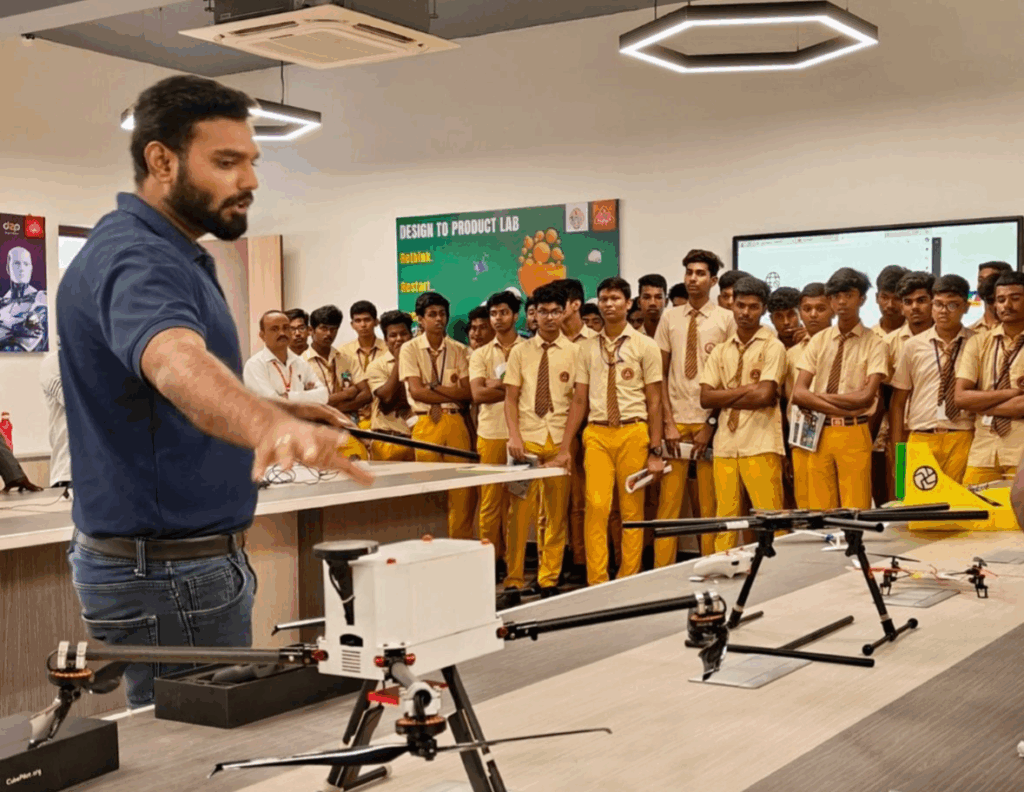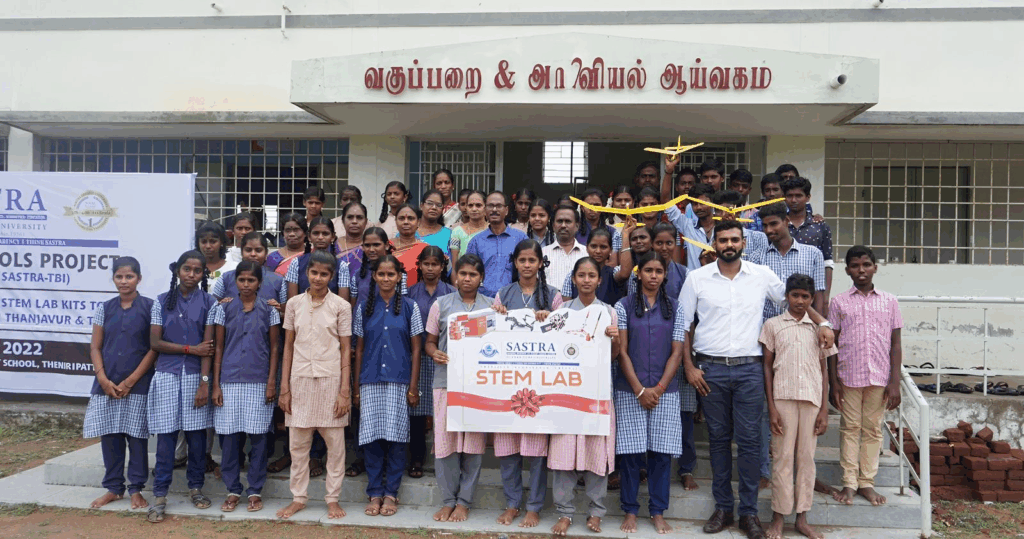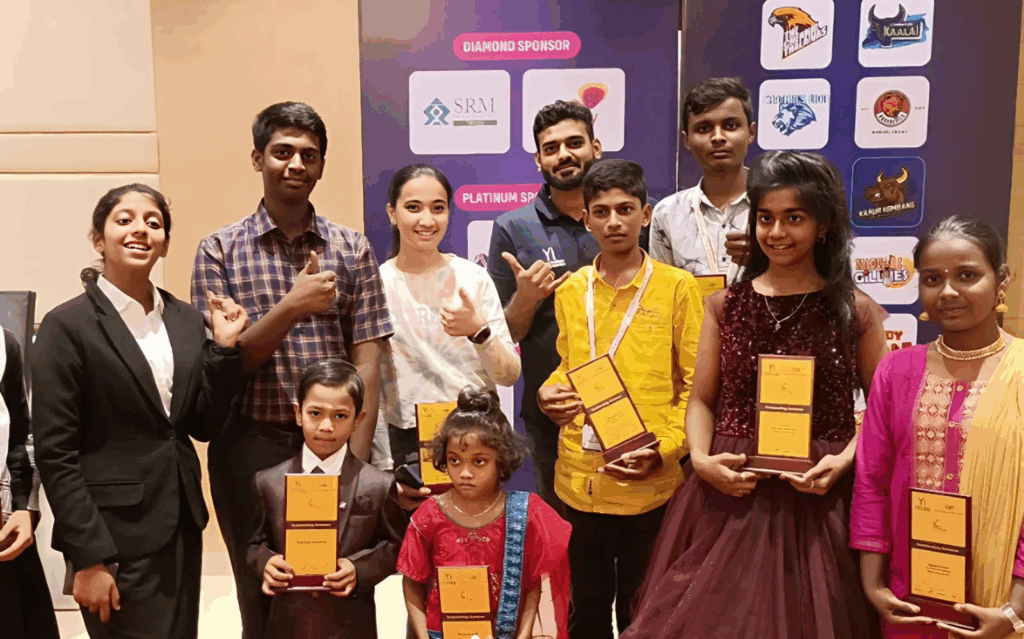When Aashik Rahman was a young boy in his small village, he would watch in awe as visitors from abroad arrived in flashy cars and motorbikes. Their machines fascinated him the designs, the sounds, the technology, even the way brake lights glowed when someone applied the brakes.
Those little things felt extraordinary to him. At that time, he had only a humble bicycle, but curiosity became his engine. Determined to make his cycle stand out, he began modifying it, adding his own creative touches.
He installed small lights that lit up when he stopped and built simple contraptions that mimicked the mechanisms he admired in modern vehicles.
Soon, his bicycle became a neighborhood wonder. Everyone in his area wanted something similar. What started as a child’s fascination turned into an early display of innovative thinking.
Encouraged by the appreciation he received, Aashik began experimenting endlessly building models, tinkering with tools, and inventing small devices that made everyday life easier.
His science exhibitions became his playground for dreams, often filled with more than a dozen projects that reflected his growing interest in automation.
Films like Transformers, Iron Man, and other Hollywood blockbusters further sparked his imagination. He was curious about how technology and human creativity could blend to create intelligent machines. During his engineering years, this curiosity took a new shape.
He started building small robots one that could feed his 100 pigeons and another that could alert his mother when it rained. These early prototypes were functional expressions of his learning journey. They shaped a mindset built on experimentation and problem-solving qualities that would later define his mission.

Nurturing Innovation Through Education
During his engineering days, Aashik studied Electronics and Communication but collaborated with students from mechanical, computer, and other departments. He realized that what excited him most was helping others build their ideas.
He noticed that many students had incredible concepts but didn’t know where to start, where to find mentorship, or how to finish what they began. Aashik naturally began guiding his peers, explaining circuits, sensors, and coding and watching as their ideas came alive.
It was during this time he discovered the concept of STEM education Science, Technology, Engineering, and Mathematics a framework for learning that integrates theoretical subjects with hands-on experiments.
It was more than just learning to build; it was about building to learn. He realized that teaching through experience was far more impactful than memorizing theories. For Aashik, innovation was not a subject; it was a mindset one that needed to be cultivated early in children.
In school, he used to argue with teachers to allow him more space for his exhibits because his projects would often spill over the allotted area.
Every small invention taught him something new about persistence and process. These moments solidified his understanding that education must enable curiosity, not confine it.

Creating a Mission Out of Passion
As India started moving toward becoming a knowledge-driven economy, Aashik saw a crucial gap the lack of accessible mentorship for children and youth who wanted to innovate.
He realized that the foundation of the nation’s future industries lay in its classrooms. If children were trained early to think, create, and solve problems, India could lead the global shift toward Industry 4.0 and 5.0 innovations in robotics, AI, and manufacturing.
Aashik’s vision was clear to transform Indian schools into innovation zones where every student could become a creator. He believed that creative confidence had to be built through exposure, training, and practice. That’s when his idea evolved into a structured mission to bring STEM education to schools across urban and rural India.
He began setting up robotics and automation labs that introduced students to drones, 3D printing, artificial intelligence, and coding.
Unlike standard robotics kits that focused on assembling toys, Aashik’s programs emphasized creativity, critical thinking, and practical application.
His approach was deeply human he wanted children to feel proud of what they created and see it as relevant to real-world problems.
He also developed a unique learning system called “Kicked Technology,” an experiential curriculum where children learn to identify real-life problems, work with available resources, and build market-ready solutions.
This concept focused not on rote success but on nurturing entrepreneurial and engineering thinking among young students.

Building Communities of Young Innovators
As told to The Logical Indian, Aashik’s team soon partnered with several private and rural schools, transforming classrooms into technology labs.
He believed that every school, like every cricket team, should have its active technology team. These groups of students worked together to ideate, design, and develop prototypes ranging from self-cleaning restrooms to automated irrigation systems.
In the process, schools began realizing that robotics shouldn’t just be an extracurricular subject it should be an integral part of academics.
Aashik and his team designed structured courses from class 1 onwards, ensuring children had progressive exposure to science, coding, and engineering year after year.
His company’s implementation methodology made schools more confident and parents more supportive. Teachers received proper training, and schools started seeing measurable achievements students winning competitions, forming startups, and securing admission to top institutions.
His team also collaborated with large corporates like Amazon, TCS, TVS, and UltraTech under their CSR wings to expand STEM education to remote and economically disadvantaged schools.
These partnerships helped set up technology labs in rural regions, empowering children with access to tools they had never seen before. He even created specialized STEM programs for visually impaired students, ensuring inclusivity was at the heart of innovation.
One story that deeply moved him was of a student whose father earned daily wages as a tea master. The boy participated actively in the school’s robotics lab, developed an award-winning robot, and later secured admission to an engineering college.
His entire village celebrated his achievement, a story that reaffirmed Aashik’s conviction that innovation could empower any child, regardless of background.

Building for the Future
Over the past decade, Aashik’s vision has turned into a tangible movement. His programs now run in more than 490 schools in Tamilnadu and other regions.
During the COVID-19 pandemic, his team designed and deployed service robots to assist hospitals and deliver medicines to patients, earning recognition as community heroes.
Many of his students, who began experimenting in school labs, went on to join institutions like IITs and start their own ventures. Today, more than 80 percent of participants in inter-school innovation competitions in his region are students trained under his STEM ecosystem.
Aashik’s philosophy of “learn, yearn, and empower” defines his approach learn deeply, yearn to explore, and empower others to do the same.
His focus is not only to nurture innovators but also socially conscious citizens who use technology for the betterment of society.
As a social entrepreneur, he believes that purpose-driven business can create long-lasting change. His goal is to integrate STEM into every school, building a generation that learns to innovate for good.
His long-term plan includes mentoring local educators, improving training infrastructure, and expanding the program to other states.

The Logical Indian Perspective
Aashik Rahman’s story reflects how curiosity can evolve into a movement. From a young boy attaching lights to his bicycle to a visionary who has trained thousands of students to think like innovators, his journey reminds us of the power of imagination when combined with purpose.
In a system where education often focuses on exams over experimentation, Aashik’s approach bridges the gap between theory and curiosity. His STEM ecosystem redefines learning by transforming children from passive learners into creators of change.
For India’s next generation, his story stands as an inspiration proof that innovation is not reserved for labs abroad but can begin right in a village, with a child who simply wonders how brake lights shine.
If you’d like us to feature your story, please write to us at csr@5w1h.media












